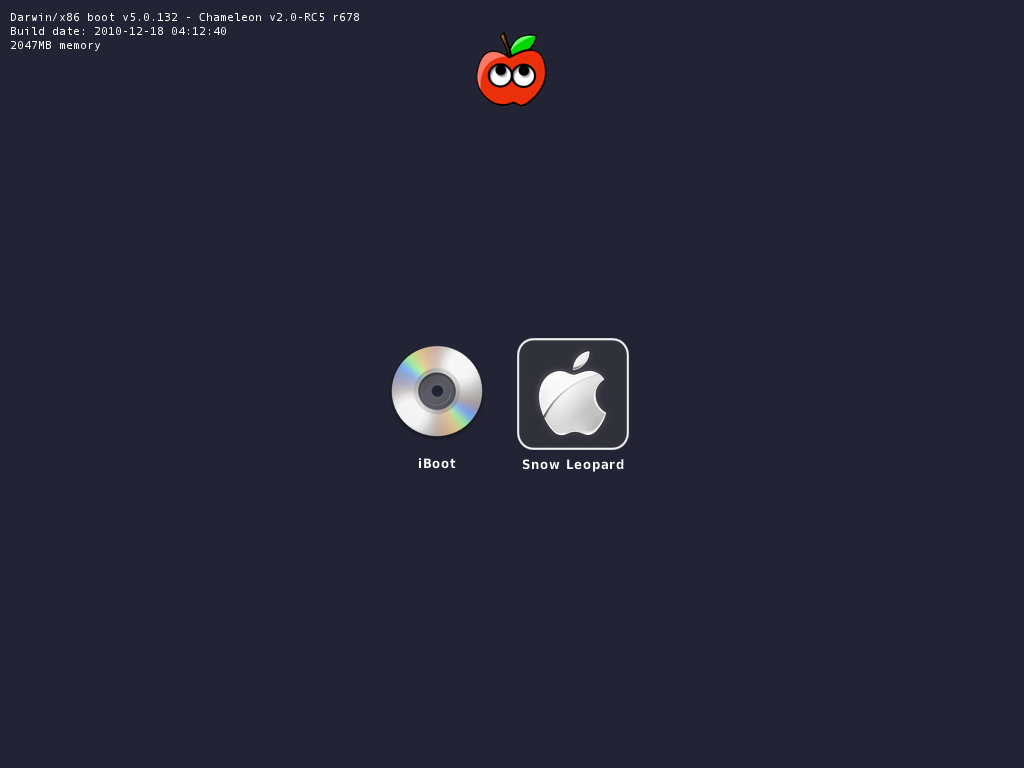
 When the installation has finished the computer will restart into the Setup Assistant. Continue with the OS X installation and follow the directions. After formatting has finished quit Disk Utility. Click on the Options button and select GUID, click OK button, set the format type to MacOS Extended, Journaled. Set the number of partitions to one (1) from the drop down menu. After Disk Utility loads select the out-dented disk entry from the side list (mfgr.'s ID and drive size.) Click on the Partition tab in the Disk Utility’s right window. When the menu bar appears select Disk Utility from the Utilities' menu. After the installer loads select your language and click on the Continue button. Release the key when the Apple logo appears and wait for the loading to finish. Immediately upon hearing the chime hold down the C key. Insert Snow Leopard DVD into the optical drive and restart the computer. If possible be sure to back up your files. Some features require Apple’s iCloud services fees and Some features require a compatible Internet service provider Ħ. After you install Snow Leopard you will have to download and install the Mac OS X 10.6.8 Update Combo v1.1 to update Snow Leopard to 10.6.8 and give you access to the App Store.ĥ. You will be sent physical media by mail after placing your order. You can purchase Snow Leopard through the Apple Store: Mac OS X 10.6 Snow Leopard - Apple Store (U.S.). Once finished, you can proceed to write the installer onto a USB drive.You will need the original installation DVDs that came with the computer when it was new or a copy of the retail Snow Leopard installer.
When the installation has finished the computer will restart into the Setup Assistant. Continue with the OS X installation and follow the directions. After formatting has finished quit Disk Utility. Click on the Options button and select GUID, click OK button, set the format type to MacOS Extended, Journaled. Set the number of partitions to one (1) from the drop down menu. After Disk Utility loads select the out-dented disk entry from the side list (mfgr.'s ID and drive size.) Click on the Partition tab in the Disk Utility’s right window. When the menu bar appears select Disk Utility from the Utilities' menu. After the installer loads select your language and click on the Continue button. Release the key when the Apple logo appears and wait for the loading to finish. Immediately upon hearing the chime hold down the C key. Insert Snow Leopard DVD into the optical drive and restart the computer. If possible be sure to back up your files. Some features require Apple’s iCloud services fees and Some features require a compatible Internet service provider Ħ. After you install Snow Leopard you will have to download and install the Mac OS X 10.6.8 Update Combo v1.1 to update Snow Leopard to 10.6.8 and give you access to the App Store.ĥ. You will be sent physical media by mail after placing your order. You can purchase Snow Leopard through the Apple Store: Mac OS X 10.6 Snow Leopard - Apple Store (U.S.). Once finished, you can proceed to write the installer onto a USB drive.You will need the original installation DVDs that came with the computer when it was new or a copy of the retail Snow Leopard installer. 

If you see this prompt, you'll need to use an older version of macOS. Note that some machines (namely 2012 and older) may not be currently supported on macOS Ventura.This will download and install the macOS installer to your applications folder. For ourselves, we'll select macOS 12 as that's the latest public release at the time of writing. Since the patcher officially supports Big Sur and newer for patching, only those entires will be shown. Selecting this option will download Apple's Installer Catalogs and build a list for you to choose: Downloading This will present you with 2 options:įor this example, we'll assume you'll need an installer. Once downloaded, open the app and you should be greeted with this menu:įirst we'll want to select the "Create macOS Installer" button. OpenCore Legacy Patcher Release Apps (opens new window)įor this guide, we'll be using the standard OpenCore-Patcher (GUI).So to start off, you'll want to grab our app: With OpenCore Legacy Patcher, our new GUI includes a download menu for macOS installers. Note: 16GB+ USB will be required for the installer.If you're already familiar with how to do this, you can skip. This doc is centered around downloading and writing the macOS installer to a USB.







 0 kommentar(er)
0 kommentar(er)
